Abstract
Using a newly developed, extracellular vibrating electrode, we can now measure the electrical currents that traverse a single developing cell. We have studied the eggs of the common seaweed, Pelvetia, during their first 2 days of development and find that the endogenous electrical current through them includes a pulse component as well as a relatively steady component. Both of these enter the egg's growing tip and leave the rest of the embryo. The current pulses first appear a few hours after growth begins and have a characteristic shape that is independent of amplitude. They have a duration of about 100 sec, an average frequency of 1-5 per hr, and enter with peak surface intensities of 3-10 (and rarely up to 30) μA/cm2. By the two-cell stage they account for about a fourth of the total transembryonic current. Since they may overlap to any degree and (as is documented elsewhere) are generally accompanied by peak membrane depolarizations of only 2-6 mV, their course does not seem to be voltage-controlled. Thus, they seem essentially different from action potentials. We also find that the rate at which the egg grows in length is roughly proportional to the size of the steady current traversing it.
Keywords: membrane, localization, polarity, self-electrophoresis, Pelvetia
Full text
PDF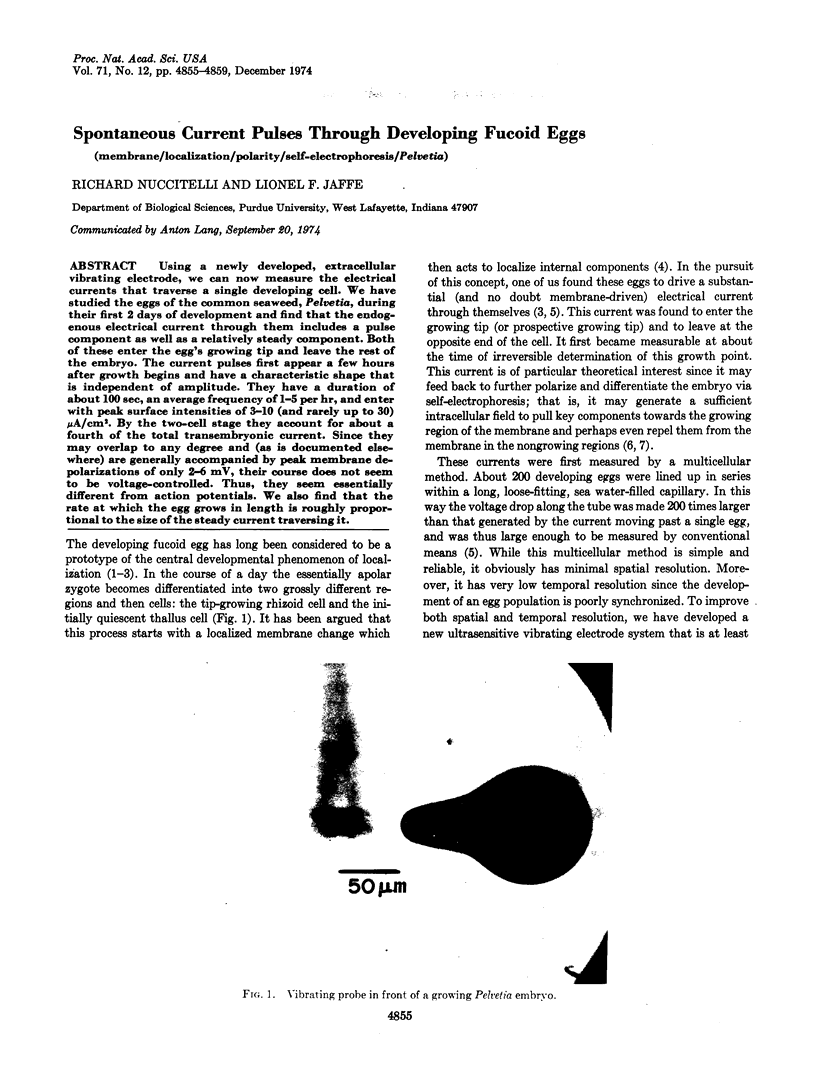
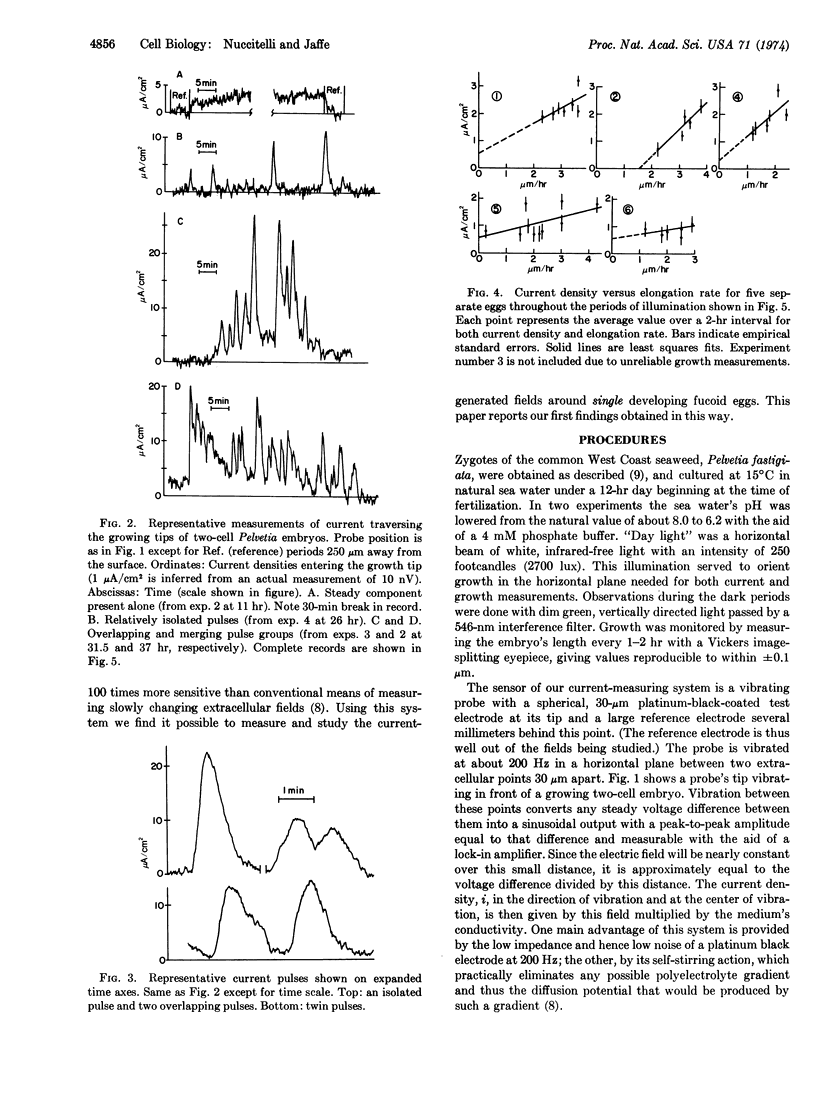
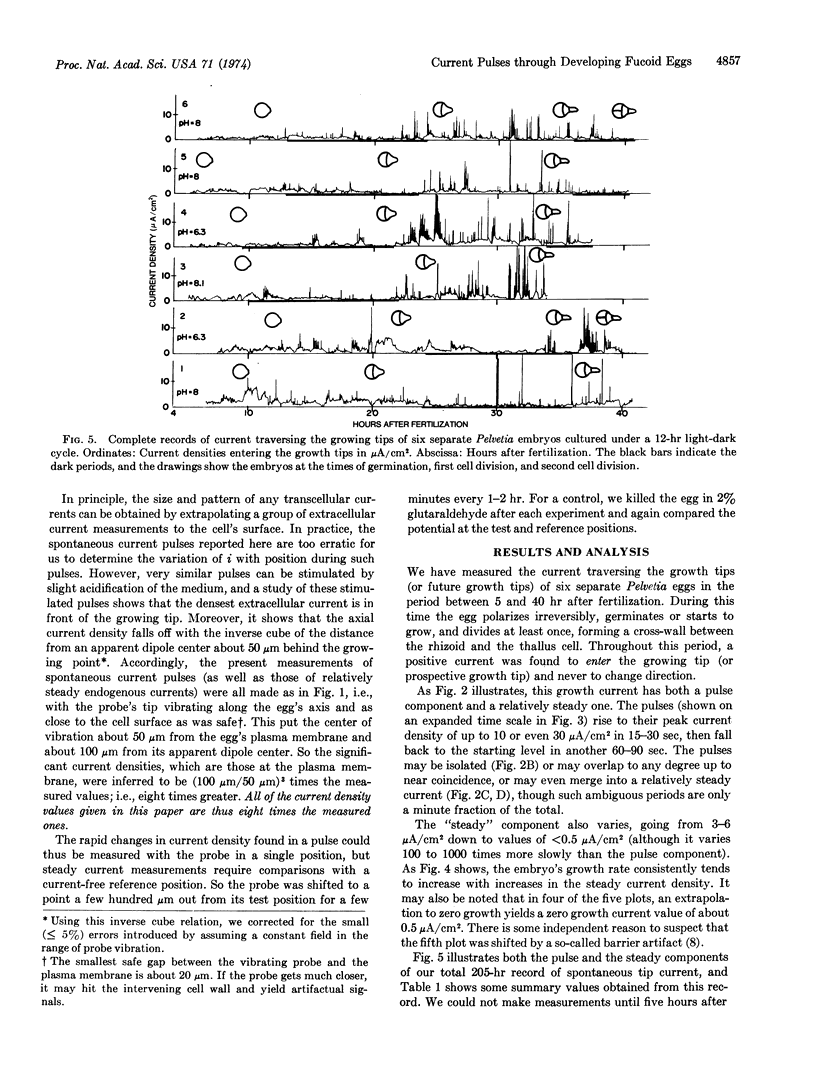
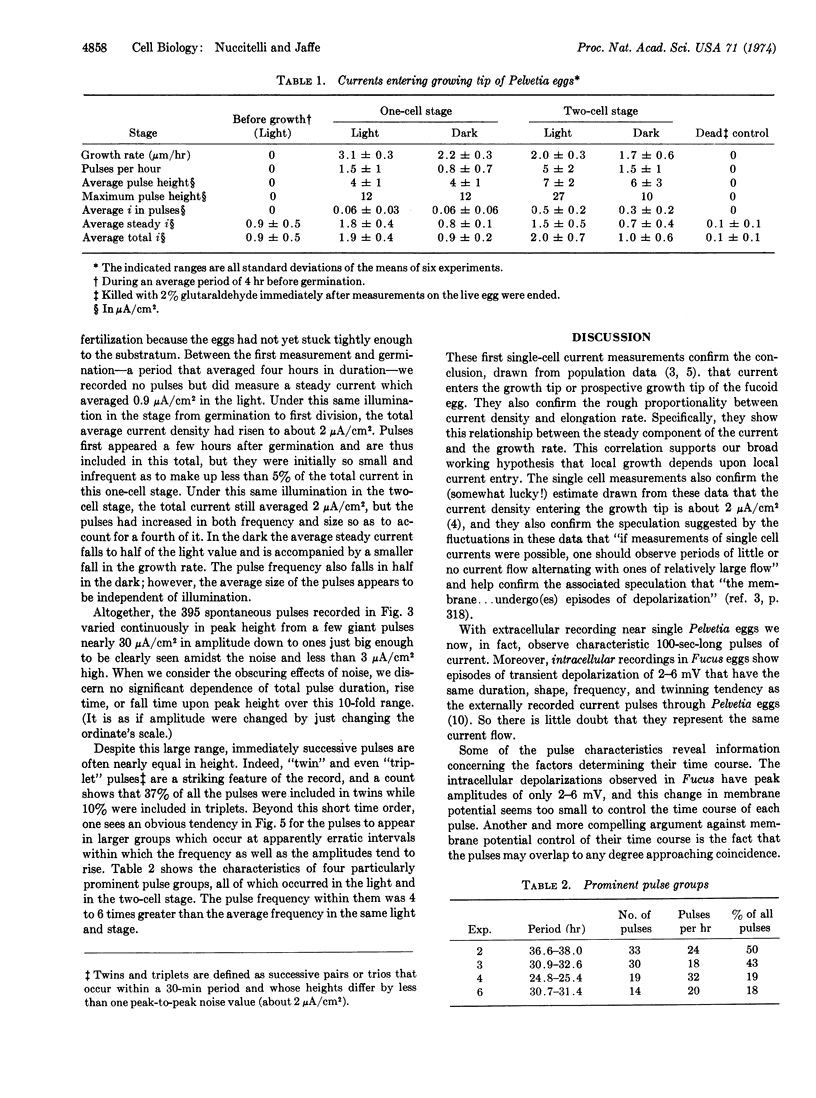
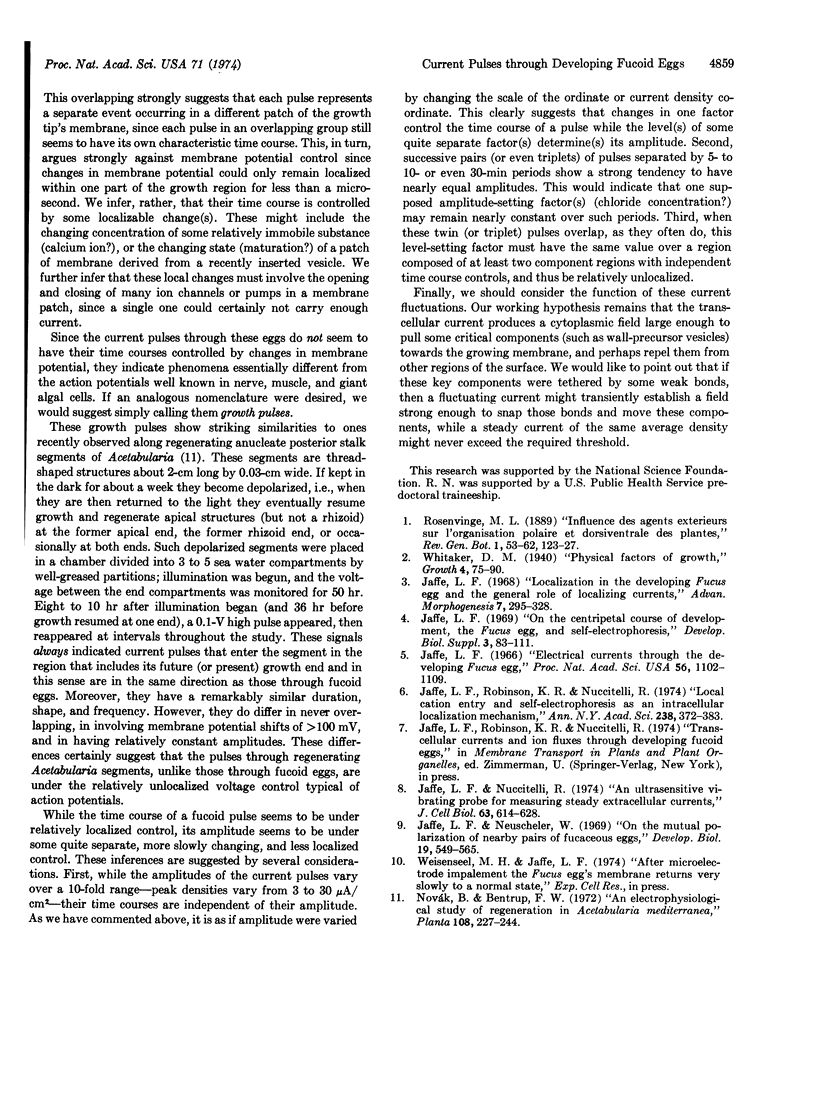
Images in this article
Selected References
These references are in PubMed. This may not be the complete list of references from this article.
- Jaffe L. F. Electrical currents through the developing fucus egg. Proc Natl Acad Sci U S A. 1966 Oct;56(4):1102–1109. doi: 10.1073/pnas.56.4.1102. [DOI] [PMC free article] [PubMed] [Google Scholar]
- Jaffe L. F. Localization in the developing Fucus egg and the general role of localizing currents. Adv Morphog. 1968;7:295–328. doi: 10.1016/b978-1-4831-9954-2.50012-4. [DOI] [PubMed] [Google Scholar]
- Jaffe L. F., Neuscheler W. On the mutual polarization of nearby pairs of fucaceous eggs. Dev Biol. 1969 Jun;19(6):549–565. doi: 10.1016/0012-1606(69)90037-2. [DOI] [PubMed] [Google Scholar]
- Jaffe L. F., Nuccitelli R. An ultrasensitive vibrating probe for measuring steady extracellular currents. J Cell Biol. 1974 Nov;63(2 Pt 1):614–628. doi: 10.1083/jcb.63.2.614. [DOI] [PMC free article] [PubMed] [Google Scholar]
- Jaffe L. F., Robinson K. R., Nuccitelli R. Local cation entry and self-electrophoresis as an intracellular localization mechanism. Ann N Y Acad Sci. 1974;238:372–389. doi: 10.1111/j.1749-6632.1974.tb26805.x. [DOI] [PubMed] [Google Scholar]



